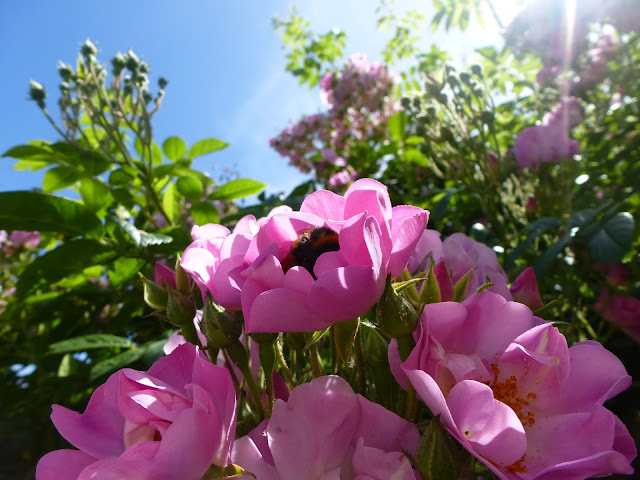The garden is small but I try my best to make it wildlife friendly by having a small pond, a few trees and plenty of bee friendly plants. These pictures I have posted are from my garden of this year.
This is a rambling rose called 'Pink Blush' a beautiful rose and the bees love it, especially the White-tailed bumblebee and the Buff-tailed bumblebee, they buzz, vibrating inside the flower to get the flower to release its pollen.
This is a Salvia called 'Sensation Deep Rose' the Common Carder bumblebee liked this one. I bought this from a garden centre because I noticed the bees all over it. I hope this one will survive the winter.
I have posted this picture before, it is the Dog Rose which the Tree bumblebees loved, they were nesting in our roof.
The Tree bumblebees did a good job of pollinating the Dog Rose, absolutly loaded with rose hips, well done to these bees which was first seen in Britain in 2001 and is very successful, it has spread from South of England to Wales and all the way up to Scotland.
Did not have many butterflies this year, I have four different buddleias which are attractive to butterflies, bees and moths. Managed to capture this Comma on my purple buddleia.
The Green Veined White butterfly was a surprise, first time I have seen this butterfly in my garden.
Jewelled Beatle


















































